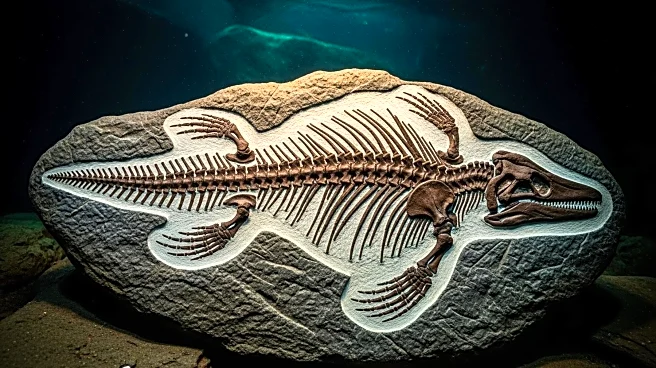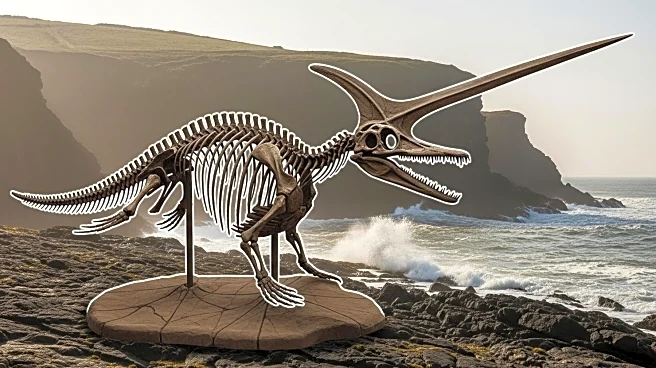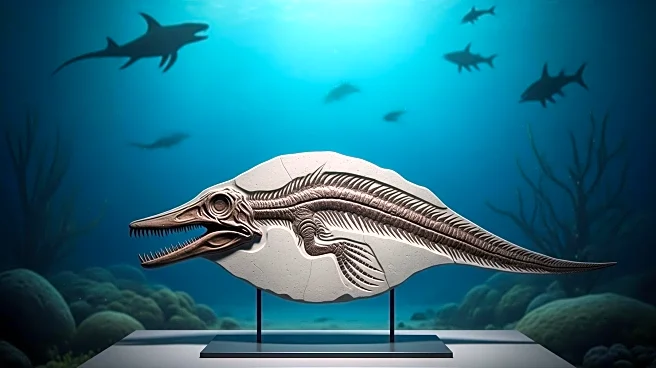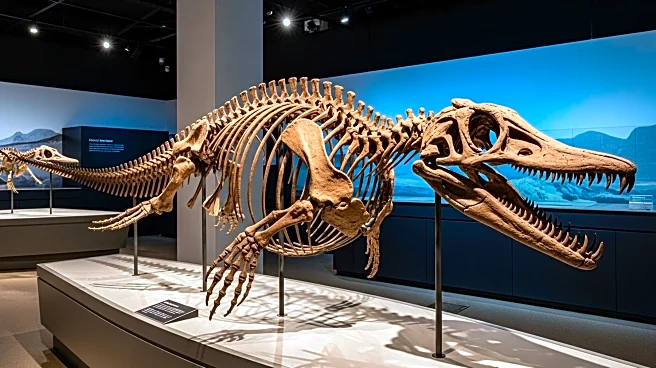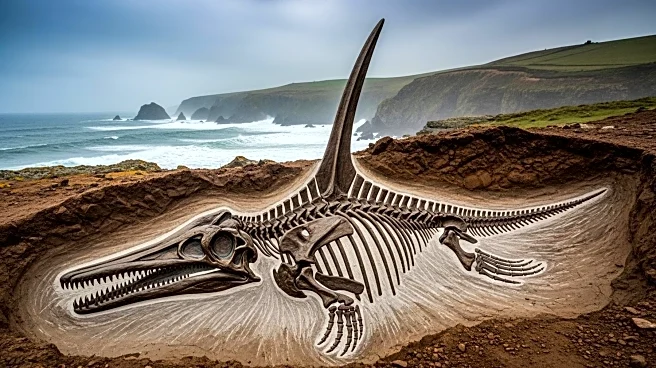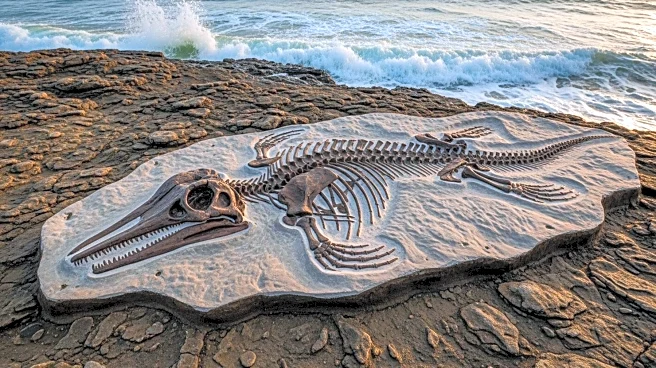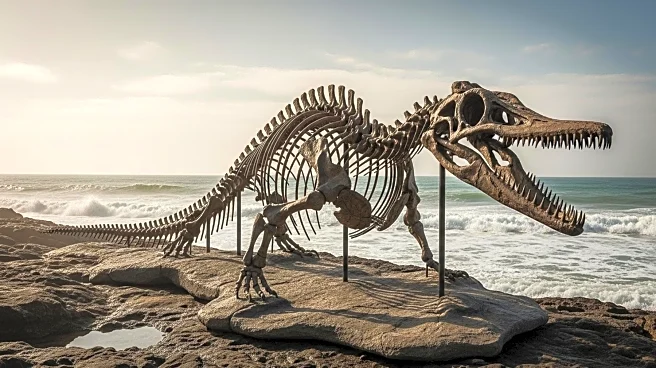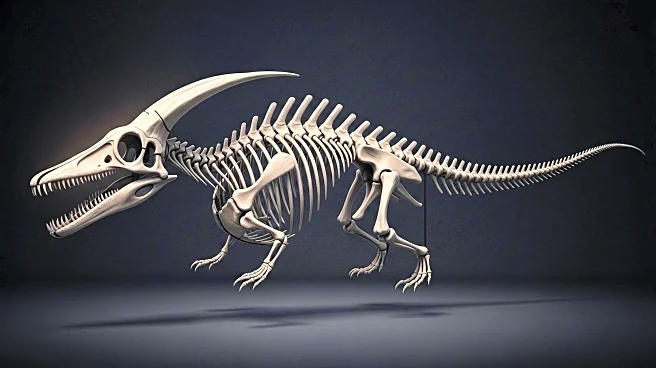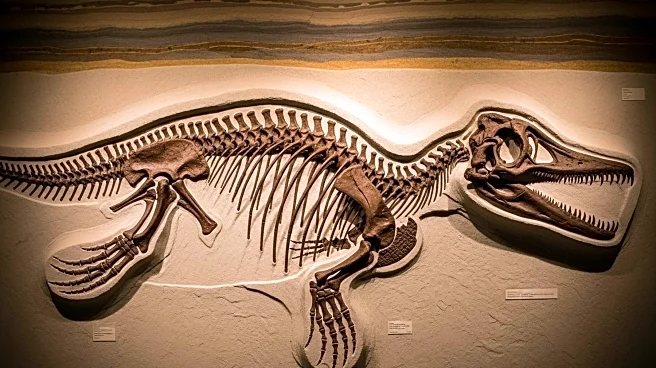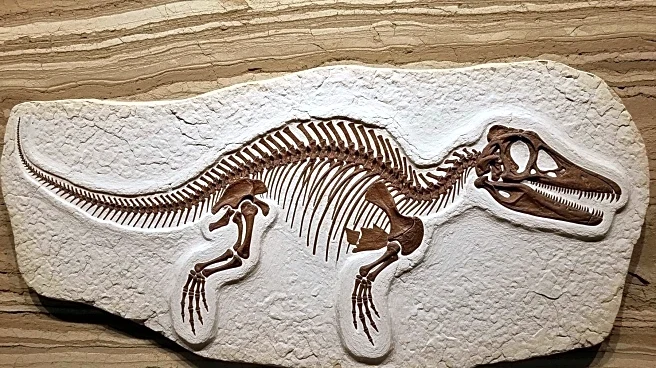What's Happening?
A new ichthyosaur fossil, dubbed the Sword Dragon of Dorset, has been discovered along the Jurassic Coast of the UK. The fossil, named Xiphodracon goldencapensis, offers insights into marine ecosystems of the early Jurassic. Discovered by collector Chris Moore, the specimen is remarkably complete and preserved in three dimensions. The fossil's massive eyes and elongated snout suggest it was a predator adapted to hunting squid and small fish. The discovery fills a gap in ichthyosaur research, providing new data on species diversity and evolution.
Why It's Important?
The discovery of the Sword Dragon of Dorset enhances understanding of ichthyosaur evolution and marine life during the Jurassic period. The fossil's preservation offers a rare opportunity to study the anatomy of these ancient marine reptiles in detail. Insights into ichthyosaur ecology contribute to knowledge of prehistoric marine ecosystems and the factors influencing species diversity. The research underscores the importance of fossil conservation and public exhibitions in advancing paleontological science.
What's Next?
Following the initial discovery, a second specimen has been located and displayed at the Charmouth Heritage Coast Centre. Public exhibitions allow researchers and enthusiasts to appreciate the anatomical complexity and ecological significance of ichthyosaurs. Future studies will continue to explore ichthyosaur evolution and their role in ancient marine ecosystems.
Beyond the Headlines
The delay between the fossil's discovery and its scientific description highlights challenges in paleontological research. The study emphasizes the importance of collaboration between museums and researchers to advance scientific knowledge. The findings contribute to broader discussions on species diversity and adaptation in prehistoric environments.

